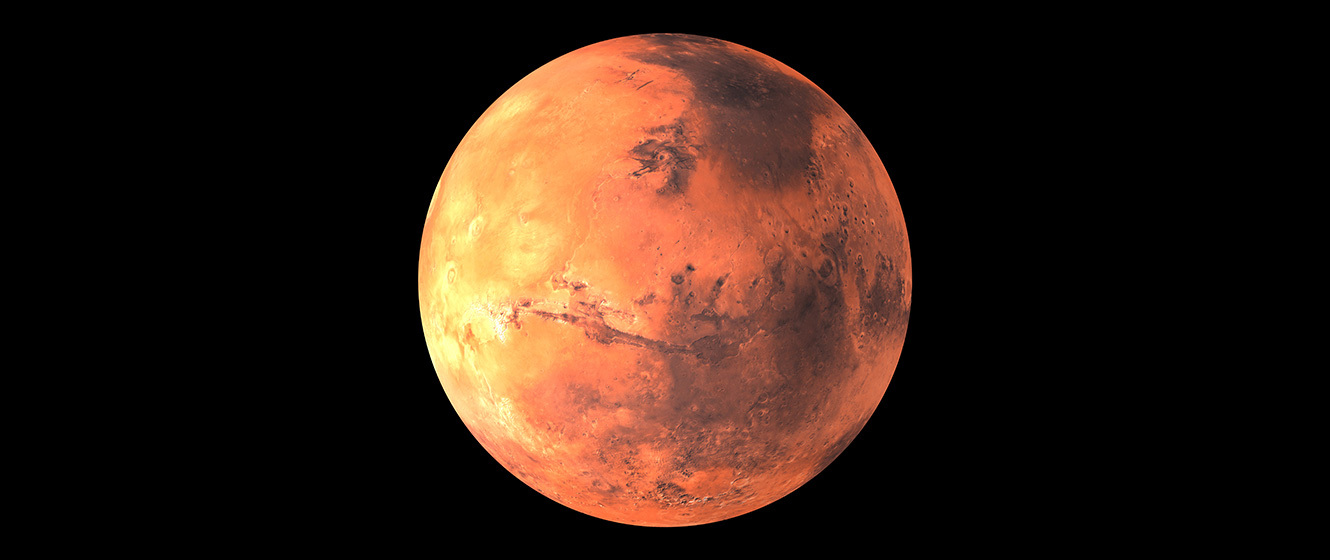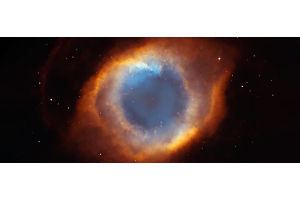
In the year 2022, Mars will be once again returning to our night sky. Mars will reach “opposition”, or the closest approach to Earth, on December 7, 2022. This will be an exciting opportunity to observe Mars at its best and brightest! However, there’s no need to wait until December 7th to observe Mars, as the planet will look spectacular for many weeks leading up to the opposition. This article will cover some of the best telescopes to observe Mars in 2022 and what to expect when observing Mars in 2022.
The planet Mars has long fascinated observers, appearing in the sky once every ~2 years or so. In the late-19th century, the astronomer Giovanni Schiaparelli made the first map of the Martian “canals”. Some astronomers went as far as to presume these canals were made by intelligent beings living on Mars, prompting a hysteria in the early part of the 20th century (also in part fueled by HG Wells’ The War of the Worlds) about Martians. It’s now understood that these canals were nothing but an optical illusion formed by the comparatively poor quality telescopes in addition to details being fuzzed by the Earth’s atmosphere.
Planetary observing can be a very rewarding part of the hobby and, unlike deep sky observing, where sky transparency is of paramount importance, the planets can be enjoyed almost anywhere, even in light-polluted cities, as long as the seeing is steady with very little atmospheric turbulence. It's also nice to know that because the planets that show the most details (Jupiter, Saturn, and Mars) are so bright, setting circles, computerized mounts, and star-hopping techniques aren’t needed for planetary observations.


Choosing the Best Telescope to Observe Mars in 2022
Although bright in the sky, Mars will only have an angular diameter of about 17 arcseconds. This is roughly the size of one of the larger craters on the surface of the Moon. A high-quality refractor telescope as small as 72mm, such as the Apertura 72EDR, will be able to resolve some of the most prominent details on Mars, such as the polar ice caps and maybe even a hint of Syrtis Major Planum.
The best views will be with telescopes larger than 6” in diameter, as resolution will greatly increase as you increase in aperture. That being said, you might find that a telescope too large might not be very portable or easy to set up. Telescopes like the Apertura AD8 or the computerized Celestron 8SE offer a good compromise between portability and aperture. We recommend against using a refractor telescope under $1,000 in this aperture range, as the glass used can result in chromatic aberration, which will create a discolored view around bright planets see our Beginners Guide to Refractor Telescopes for more information.

What about eyepieces?
To properly observe Mars, you’ll need a high-power eyepiece (anywhere from 4-10mm). The best magnification to view Mars tends to be anywhere from 100-250x, depending on seeing conditions. To calculate the magnification, simply divide the focal length of the telescope by the focal length of the eyepiece. For example, the Apertura AD8 has a focal length of 1200mm. A 6mm eyepiece would yield a 200x magnification, which would be fantastic for Mars. Some great examples include the Apertura 10mm Super Wide Angle eyepiece or Explore Scientific 6.5mm 52 degree eyepiece. You’ll find that there’s little benefit to using a 2” eyepiece over a 1.25” eyepiece for planetary, so we’d recommend using a 1.25” eyepiece to maximize your observing experience.

Will color filters help?
Low-cost filters are another way to improve the contrast of surface features when viewing Mars. Generally, the best filters for the "Red Planet" are the Orange 21 , 23A Light Red, and 25 Red filters. These filters can be screwed to the back of a high-power eyepiece and, in the case of Mars, can absolutely increase the visibility of low contrast features.
Observing the Moon occult Mars on the Night of Opposition
Looking at Mars on the evening of opposition will be an especially unique experience in 2022, as the Full Moon will pass directly in front of Mars in the evening hours for some observers. This event, also known as an “occultation”, occurs only a few times a year with the planets. The occultation will begin at roughly 01:50 UTC (9:50pm Eastern) and last until approximately 04:00 UTC (12:00am Eastern).

Visibility of the December 7, 2022, Moon occultation of Mars courtesy of www.in-the-sky.org

Regardless of which telescope you may own or your level of experience with this wonderful hobby, we encourage you to take advantage of this rare event! We highly recommend that you practice seeing details on Mars several weeks before opposition so that when the planet is at its best you will have already trained your eyes to see the most subtle details. If you are shopping for a telescope, check out our Telescope Kits and Bundles. We have selected a number of popular telescopes in a wide price range and bundled them with accessories that will help you enjoy the planets this year, and for years to come!
With a moderate-sized scope under the crystal clear skies of Australia or Nevada, spiral galaxies will reveal their structures and brighter nebulae will reveal their colors. Under a city sky, the brightest stars, planets, and moon may be visible to those who even bother to look up.
Simulated view of the Moon and Mars on the evening of December 7, 2022 - Mars will be at its largest angular size when the Moon passes in front of the red planet

Still not sure which telescope and accessories to choose for your observation of Mars? Send a message to our non-commissioned product advisors! Our team of telescope experts are happy to point you in the right direction.












